Jim Keogh - Java Demystified
Here you can read online Jim Keogh - Java Demystified full text of the book (entire story) in english for free. Download pdf and epub, get meaning, cover and reviews about this ebook. year: 2004, publisher: McGraw Hill Professional, genre: Computer. Description of the work, (preface) as well as reviews are available. Best literature library LitArk.com created for fans of good reading and offers a wide selection of genres:
Romance novel
Science fiction
Adventure
Detective
Science
History
Home and family
Prose
Art
Politics
Computer
Non-fiction
Religion
Business
Children
Humor
Choose a favorite category and find really read worthwhile books. Enjoy immersion in the world of imagination, feel the emotions of the characters or learn something new for yourself, make an fascinating discovery.

- Book:Java Demystified
- Author:
- Publisher:McGraw Hill Professional
- Genre:
- Year:2004
- Rating:5 / 5
- Favourites:Add to favourites
- Your mark:
- 100
- 1
- 2
- 3
- 4
- 5
Java Demystified: summary, description and annotation
We offer to read an annotation, description, summary or preface (depends on what the author of the book "Java Demystified" wrote himself). If you haven't found the necessary information about the book — write in the comments, we will try to find it.
Java Demystified — read online for free the complete book (whole text) full work
Below is the text of the book, divided by pages. System saving the place of the last page read, allows you to conveniently read the book "Java Demystified" online for free, without having to search again every time where you left off. Put a bookmark, and you can go to the page where you finished reading at any time.
Font size:
Interval:
Bookmark:
JIM KEOGH


Copyright 2004 by The McGraw-Hill Companies. All rights reserved. Except as permitted under the United States Copyright Act of 1976, no part of this publication may be reproduced or distributed in any form or by any means, or stored in a database or retrieval system, without the prior written permission of the publisher.
ISBN: 978-0-07-146997-5
MHID: 0-07-146997-4
The material in this eBook also appears in the print version of this title: ISBN: 978-0-07-225454-9, MHID: 0-07-225454-8.
All trademarks are trademarks of their respective owners. Rather than put a trademark symbol after every occurrence of a trademarked name, we use names in an editorial fashion only, and to the benefit of the trademark owner, with no intention of infringement of the trademark. Where such designations appear in this book, they have been printed with initial caps.
McGraw-Hill eBooks are available at special quantity discounts to use as premiums and sales promotions, or for use in corporate training programs. To contact a representative please e-mail us at bulksales@mcgraw-hill.com.
TERMS OF USE
This is a copyrighted work and The McGraw-Hill Companies, Inc. (McGraw-Hill) and its licensors reserve all rights in and to the work. Use of this work is subject to these terms. Except as permitted under the Copyright Act of 1976 and the right to store and retrieve one copy of the work, you may not decompile, disassemble, reverse engineer, reproduce, modify, create derivative works based upon, transmit, distribute, disseminate, sell, publish or sublicense the work or any part of it without McGraw-Hills prior consent. You may use the work for your own noncommercial and personal use; any other use of the work is strictly prohibited. Your right to use the work may be terminated if you fail to comply with these terms.
THE WORK IS PROVIDED AS IS. McGRAW-HILL AND ITS LICENSORS MAKE NO GUARANTEES OR WARRANTIES AS TO THE ACCURACY, ADEQUACY OR COMPLETENESS OF OR RESULTS TO BE OBTAINED FROM USING THE WORK, INCLUDING ANY INFORMATION THAT CAN BE ACCESSED THROUGH THE WORK VIA HYPERLINK OR OTHERWISE, AND EXPRESSLY DISCLAIM ANY WARRANTY, EXPRESS OR IMPLIED, INCLUDING BUT NOT LIMITED TO IMPLIED WARRANTIES OF MERCHANTABILITY OR FITNESS FOR A PARTICULAR PURPOSE. McGraw-Hill and its licensors do not warrant or guarantee that the functions contained in the work will meet your requirements or that its operation will be uninterrupted or error free. Neither McGraw-Hill nor its licensors shall be liable to you or anyone else for any inaccuracy, error or omission, regardless of cause, in the work or for any damages resulting there from. McGraw-Hill has no responsibility for the content of any information accessed through the work. Under no circumstances shall McGraw-Hill and/or its licensors be liable for any indirect, incidental, special, punitive, consequential or similar damages that result from the use of or inability to use the work, even if any of them has been advised of the possibility of such damages. This limitation of liability shall apply to any claim or cause whatsoever whether such claim or cause arises in contract, tort or otherwise.
This book is dedicated to Anne, Sandy, Joanne,
Amber-Leigh Christine, and Graaf, without whose
help and support this book couldn't be written.
Jim Keogh is a member of the faculty of Columbia University where he teaches courses on Java Application Development, and is also a member of the Java Community Process Program. He developed the first e-commerce track at Columbia and became its first chairperson. Jim spent more than a decade developing advanced systems for major Wall Street firms and is also the author of several best-selling computer books.
This book is for everyone who wants to learn the basics of the Java programming language without taking a formal course. This book also serves as a supplemental classroom text. For best results, you should start at the beginning of the book and go straight through.
If you are confident about your basic knowledge of programming, skip the first chapter but take the quiz at the end of the chapter to see if you are actually ready to jump into Java.
If you get 90 percent of the answers correct, you're ready. If you get 75 to 89 percent correct, skim through Chapters 1 and 2. If you get less than 75 percent of the answers correct, then find a quiet place and begin reading . Doing so will get you in shape to tackle the rest of the chapters on Java.
In order to learn Java, you must have some computer skills. If we were to tell you otherwise, we'd be cheating you. Don't be intimidated. None of the computer knowledge you need goes beyond basic use of the operating system and how to enter text into an editor.
This book includes a practice quiz at the end of every chapter. These quizzes contain questions that are similar to the kinds of questions used in a Java course. You can and should refer to the chapters when taking the quizzes. When you think you're ready, take a quiz, write down your answers, and then give your list of answers to a friend. Have your friend tell you your score, but not which questions you answered incorrectly. You'll find the answers in the back of the book. Stay with one chapter until you pass the quiz.
There is also a final exam at the end of this book. The questions are practical and are drawn from all chapters in the book. Take the exam when you have finished all the chapters and have completed all the quizzes. A satisfactory score is at least 75 percent correct answers. Have a friend tell you your score without letting you know which questions you missed on the exam.
We recommend that you spend an hour or two each day with the book. You should expect to complete one chapter each week. Take it at a steady pace. Take time to absorb the material. Don't rush. You'll complete the course in a few months, and then you can use this book as a comprehensive permanent reference.
Inside Java
Computer programming might seem mystifying and something that should be left to university scientists, but it isn't. With a little time and effort you can easily master computer programming and take control over your computer in a way you never thought you could. If you can read this book and take a few notes, you have all the skills needed to write a computer program. A computer program is a set of instructions for the computer to follow. Those instructions are written in a programming language that is very similar to English. There are many computer languages. One of the more popular is Java. By now you probably have heard all the hoopla about Java and how Java is revolutionizing the world of computer programming. You'll be in the forefront of this revolution by learning how to put your computer through its paces by writing your own Java program. Let's begin at the beginning with the basics and then work up to everything you need to know to write a Java program.
You probably use a personal computer; however, a personal computer is only one kind of computer. Other kinds of computers include personal digital assistants (PDAs), powerful computers that run corporations, and tiny computers in automobiles, aircraft, and home appliances.
Font size:
Interval:
Bookmark:
Similar books «Java Demystified»
Look at similar books to Java Demystified. We have selected literature similar in name and meaning in the hope of providing readers with more options to find new, interesting, not yet read works.
Discussion, reviews of the book Java Demystified and just readers' own opinions. Leave your comments, write what you think about the work, its meaning or the main characters. Specify what exactly you liked and what you didn't like, and why you think so.


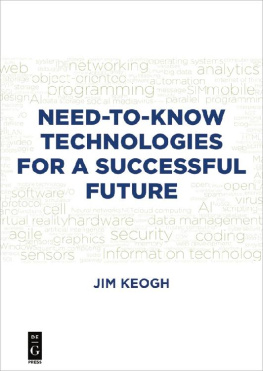
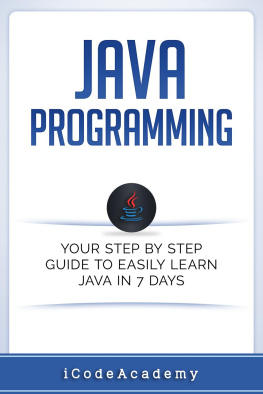
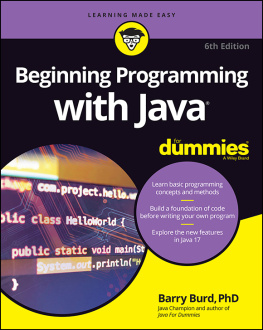

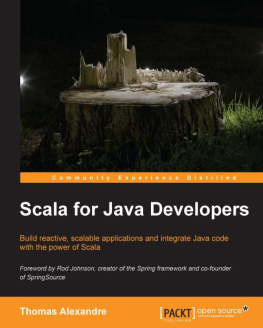
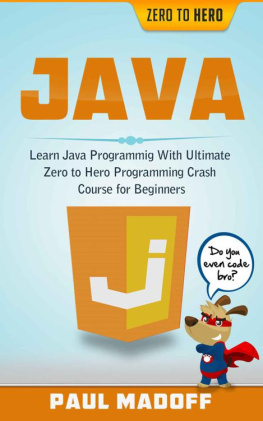
![Ivor Horton [Ivor Horton] - Ivor Horton’s Beginning Java®, Java 7 Edition](/uploads/posts/book/119392/thumbs/ivor-horton-ivor-horton-ivor-horton-s.jpg)
